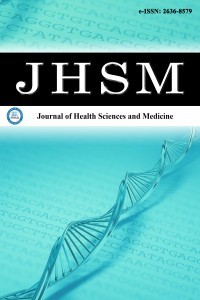1.
Else T, Kim AC, Sabolch A, et al. Adrenocortical carcinoma. <em>Endocr Rev.</em> 2014;35(2):282-326. doi:10.1210/er.2013-1029
2.
Creemers SG, van Koetsveld PM, de Herder WW, et al. MDR1 inhibition increases sensitivity to doxorubicin and etoposide in adrenocortical cancer. <em>Endocr Relat Cancer.</em> 2019. doi:10.1530/ERC-18-0500
3.
Karwacka I, Obolonczyk L, Kaniuka-Jakubowska S, Sworczak K. The role of immunotherapy in the treatment of adrenocortical carcinoma. biomedicines. 2021;9(2):1-12. doi:10.3390/BIOMEDICINES9020098
4.
Fassnacht M, Dekkers OM, Else T, et al. European Society of Endocrinology Clinical Practice Guidelines on the management of adrenocortical carcinoma in adults, in collaboration with the European Network for the Study of Adrenal Tumors. <em>Eur J Endocrinol.</em> 2018;179(4):G1-G46. doi:10.1530/EJE-18-0608
5.
Creemers SG, Hofland LJ, Korpershoek E, et al. Future directions in the diagnosis and medical treatment of adrenocortical carcinoma. <em>Endocr Relat Cancer.</em> 2016;23(1):R43-R69. doi:10. 1530/ERC-15-0452
6.
Kerkhofs TMA, Ettaieb MHT, Hermsen IGC, Haak HR. Developing treatment for adrenocortical carcinoma. <em>Endocr Relat Cancer.</em> 2015;22(6):R325-R338. doi:10.1530/ERC-15-0318
7.
Poli G, Guasti D, Rapizzi E, et al. Morphofunctional effects of mitotane on mitochondria in human adrenocortical cancer cells. <em>Endocr Relat Cancer.</em> 2013;20(4):537-550. doi:10.1530/ERC-13-0150
8.
Corso CR, Acco A, Bach C, Bonatto SJR, de Figueiredo BC, de Souza LM. Pharmacological profile and effects of mitotane in adrenocortical carcinoma. <em>Br J Clin Pharmacol.</em> 2021;87(7):2698-2710. doi:10.1111/BCP.14721
9.
Creamer TP. Calcineurin. <em>Cell Commun Signal.</em> 2020;28;18(1):137. doi: 10.1186/s12964-020-00636-4
10.
Berber M, Leng S, Beuschlein F, Breault DT, Loffing J, Ribas DP. Calcineurin-NFATc4 pathway is activated upon K+-stimulation of adrenal aldosterone production. <em>J Endocr Soc.</em> 2021;5(Suppl 1):A805. doi:10.1210/JENDSO/BVAB048.1638
11.
Chen L, Song M, Yao C. Calcineurin in development and disease. <em>Genes Dis.</em> 2022;9(4):915-927. doi:10.1016/j.gendis.2021.03.002
12.
Tedesco D, Haragsim L. Cyclosporine: a review. <em>J Transplant.</em> 2012;2012:1-7. doi:10.1155/2012/230386
13.
Adithan A, John Peter JS, Hossain MA, et al. Biological effects of cyclosporin A on CD3-CD161+ and CD3+CD161+ lymphocytes. <em>Mol Cell Biochem.</em> 2019;458(1-2):159-169. doi: 10.1007/s11010-019-03539-2
14.
Flores C, Fouquet G, Moura IC, Maciel TT, Hermine O. Lessons to learn from low-dose cyclosporin-A: a new approach for unexpected clinical applications. <em>Front Immunol.</em> 2019;10:588. doi:10.3389/FIMMU.2019.00588
15.
Devaux CA, Melenotte C, Piercecchi-Marti M-D, Delteil C, Raoult D. Cyclosporin A: a repurposable drug in the treatment of COVID-19? <em>Front Med.</em> 2021;8:663708. doi: 10.3389/fmed. 2021.663708
16.
Caner A, Onal MG, Bitgen N, Sezer G. The effect of cyclosporine A on proteins controlling intracellular calcium concentration in breast cancer cells. <em>J Membr Biol.</em> 2021:1-7. doi:10.1007/S00232-021-00201-1
17.
Cosentini D, Grisanti S, Volta AD, et al. Immunotherapy failure in adrenocortical cancer: where next? <em>Endocr Connect.</em> 2018; 7(12):E5. doi:10.1530/EC-18-0398
18.
Spät A, Hunyady L, Szanda G. Signaling interactions in the adrenal cortex. <em>Front Endocrinol (Lausanne)</em>. 2016;7:17. doi:10. 3389/fendo.2016.00017
19.
Xing Y, Lerario AM, Rainey W, Hammer GD. Development of adrenal cortex zonation. <em>Endocrinol Metab Clin North Am.</em> 2015;44(2):243-274. doi:10.1016/j.ecl.2015.02.001
20.
Hescot S, Amazit L, Lhomme M, et al. Identifying mitotane-induced mitochondria-associated membranes dysfunctions: metabolomic and lipidomic approaches. <em>Oncotarget.</em> 2017;8(66):109924-109940. doi:10.18632/ONCOTARGET.18968
21.
Boulate G, Amazit L, Naman A, et al. Potentiation of mitotane action by rosuvastatin: New insights for adrenocortical carcinoma management. <em>Int J Oncol.</em> 2019;54(6):2149-2156. doi:10.3892/IJO.2019.4770/HTML
22.
Matsuda S, Koyasu S. Mechanisms of action of cyclosporine. <em>Immunopharmacology.</em> 2000;47(2-3):119-125. doi:10.1016/S0162-3109(00)00192-2
23.
Vial T, Descotes J. Immunosuppressive drugs and cancer. <em>Toxicology.</em> 2003;185(3):229-240.
24.
Kim HS, Choi S Il, Jeung EB, Yoo YM. Cyclosporine A induces apoptotic and autophagic cell death in rat pituitary GH3 cells. <em>PLoS One.</em> 2014;9(10):108981. doi:10.1371/JOURNAL.PONE. 0108981
25.
Sato M, Tsujino I, Fukunaga M, et al. Cyclosporine A induces apoptosis of human lung adenocarcinoma cells via caspase-dependent pathway.<em>Anticancer Res</em>. 2011;31(6):2129-2134.
26.
Roy MK, Takenaka M, Kobori M, Nakahara K, Isobe S, Tsushida T. Apoptosis, necrosis and cell proliferation-inhibition by cyclosporine A in U937 cells (a human monocytic cell line). <em>Pharmacol Res.</em> 2006;53(3):293-302. doi:10.1016/J.PHRS.2005. 12.007
27.
Pereira SS, Monteiro MP, Antonini SR, Pignatelli D. Apoptosis regulation in adrenocortical carcinoma. <em>Endocr Connect.</em> 2019; 8(5):R91-R104. doi:10.1530/ec-19-0114
28.
López-Flores R, Bojalil R, Benítez JC, et al. Consecutive low doses of cyclosporine A induce pro-inflammatory cytokines and accelerate allograft skin rejection. <em>Molecules</em>. 2011;16(5):3969-3984. doi:10.3390/molecules16053969

